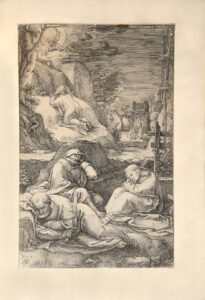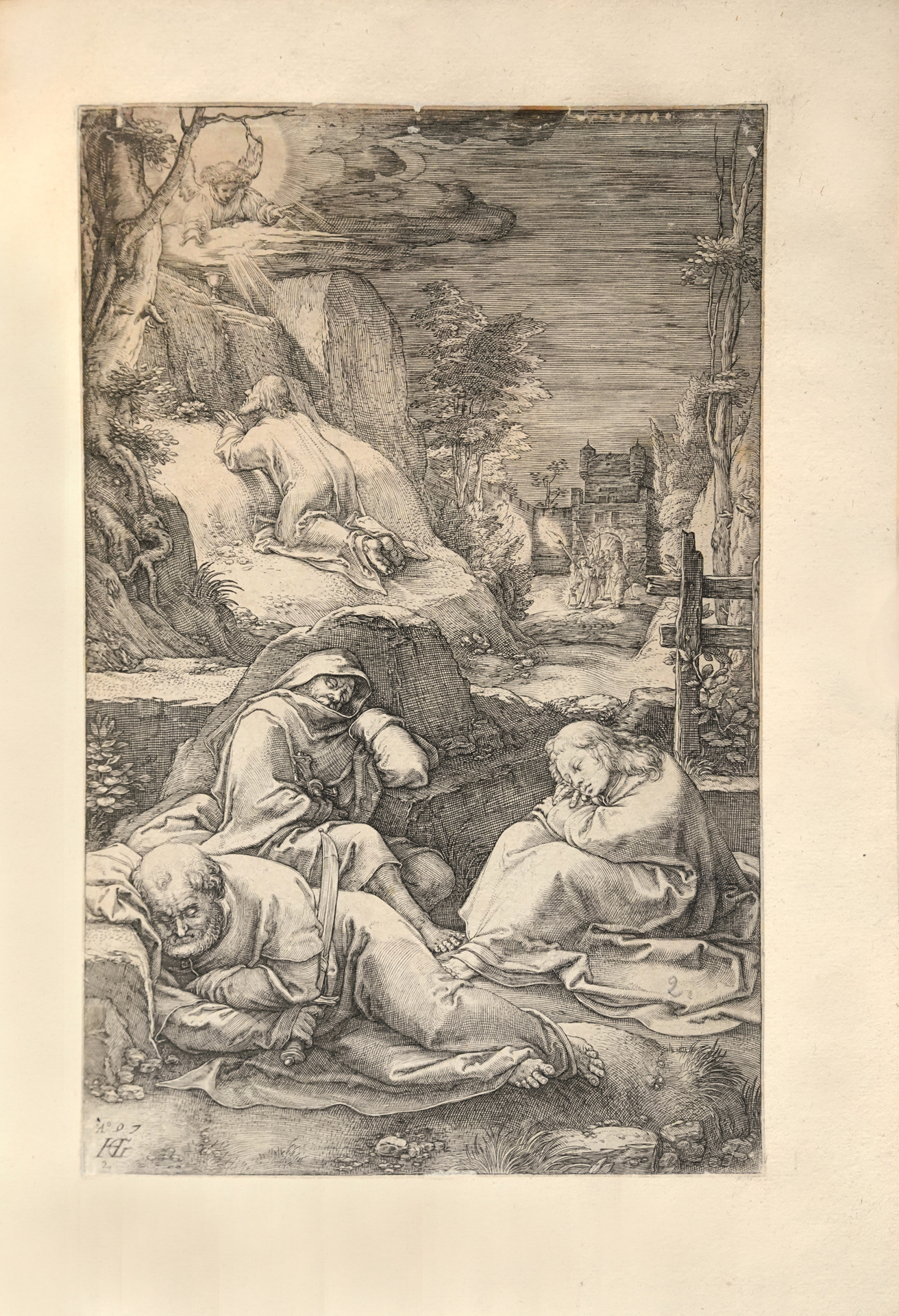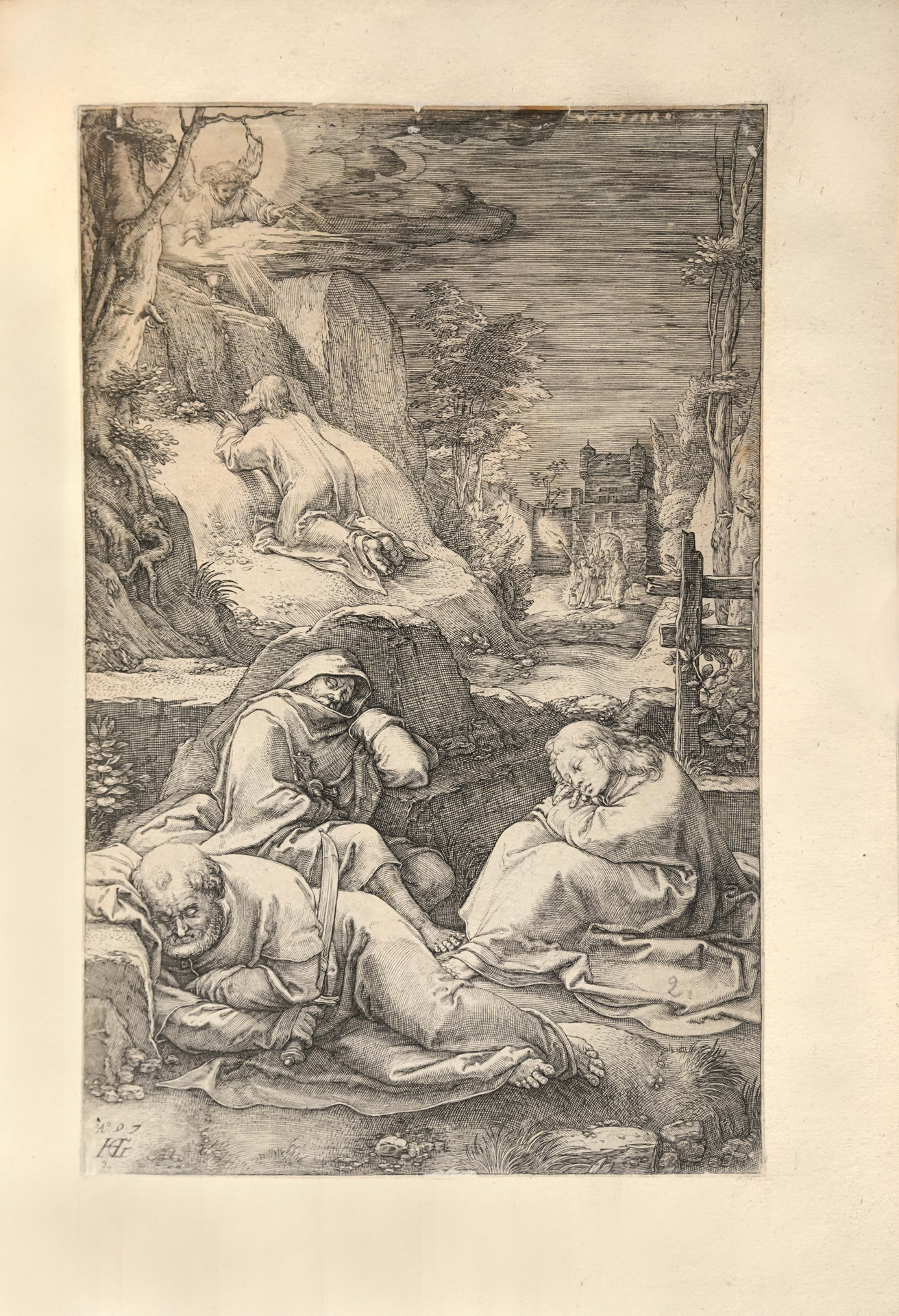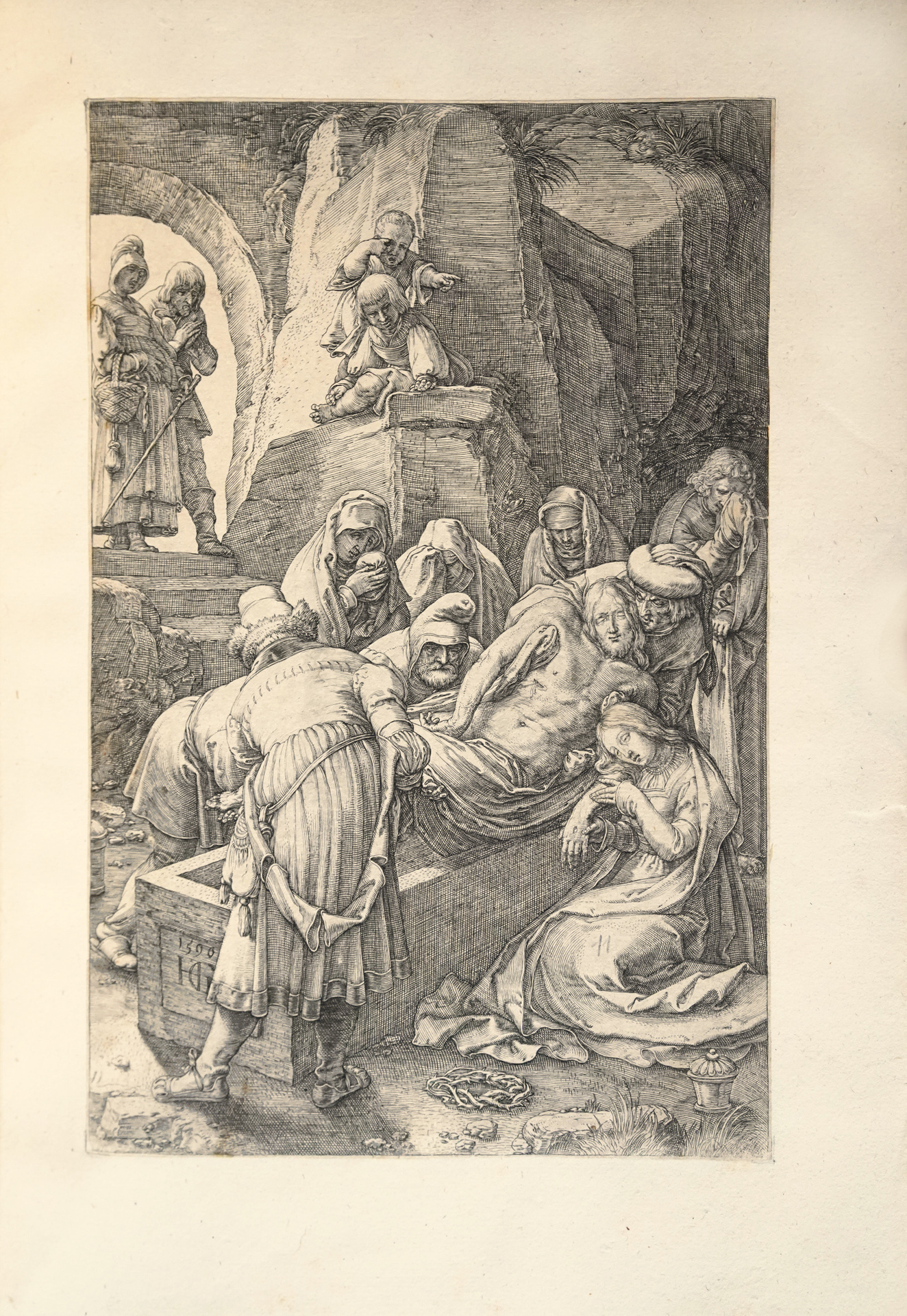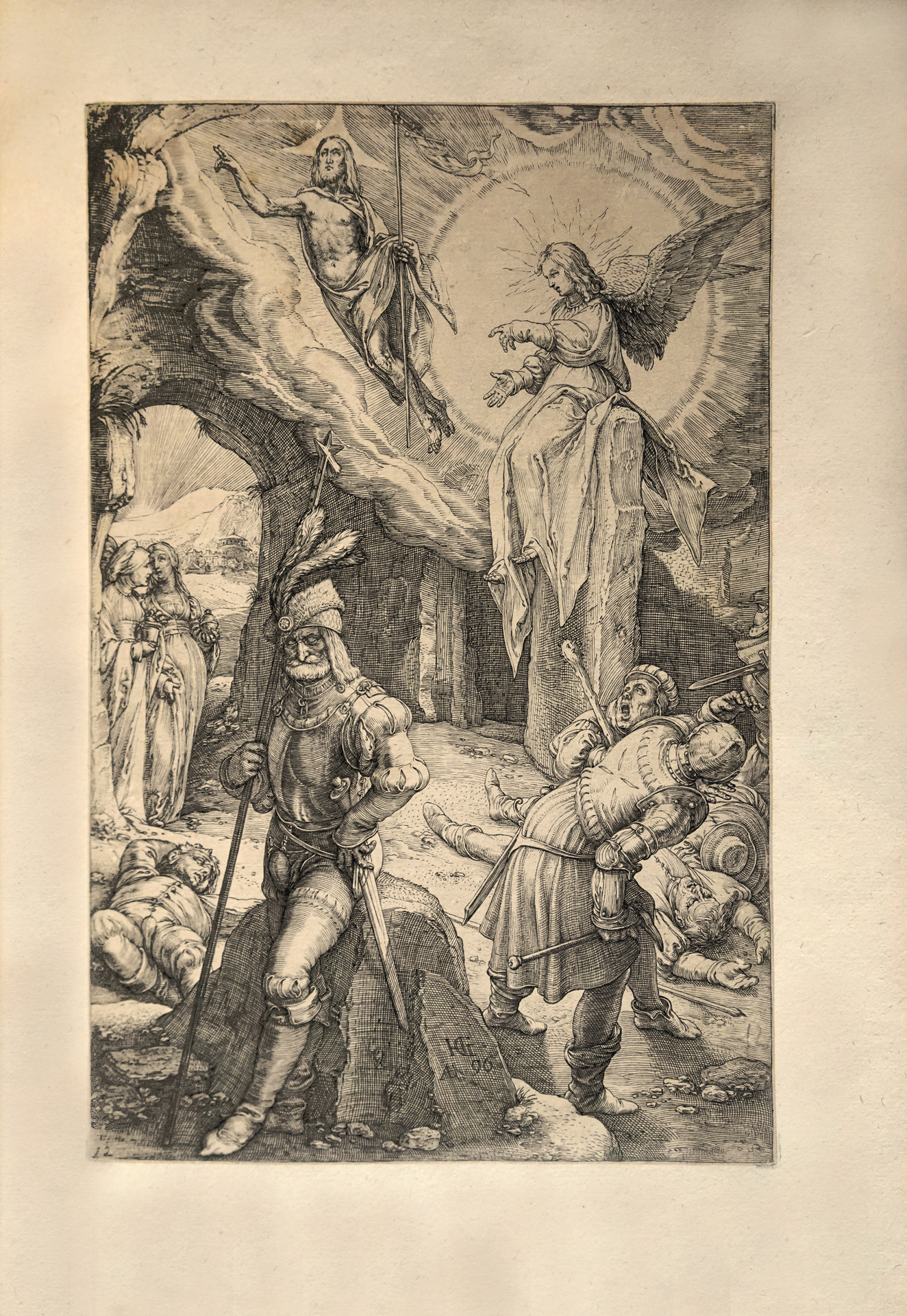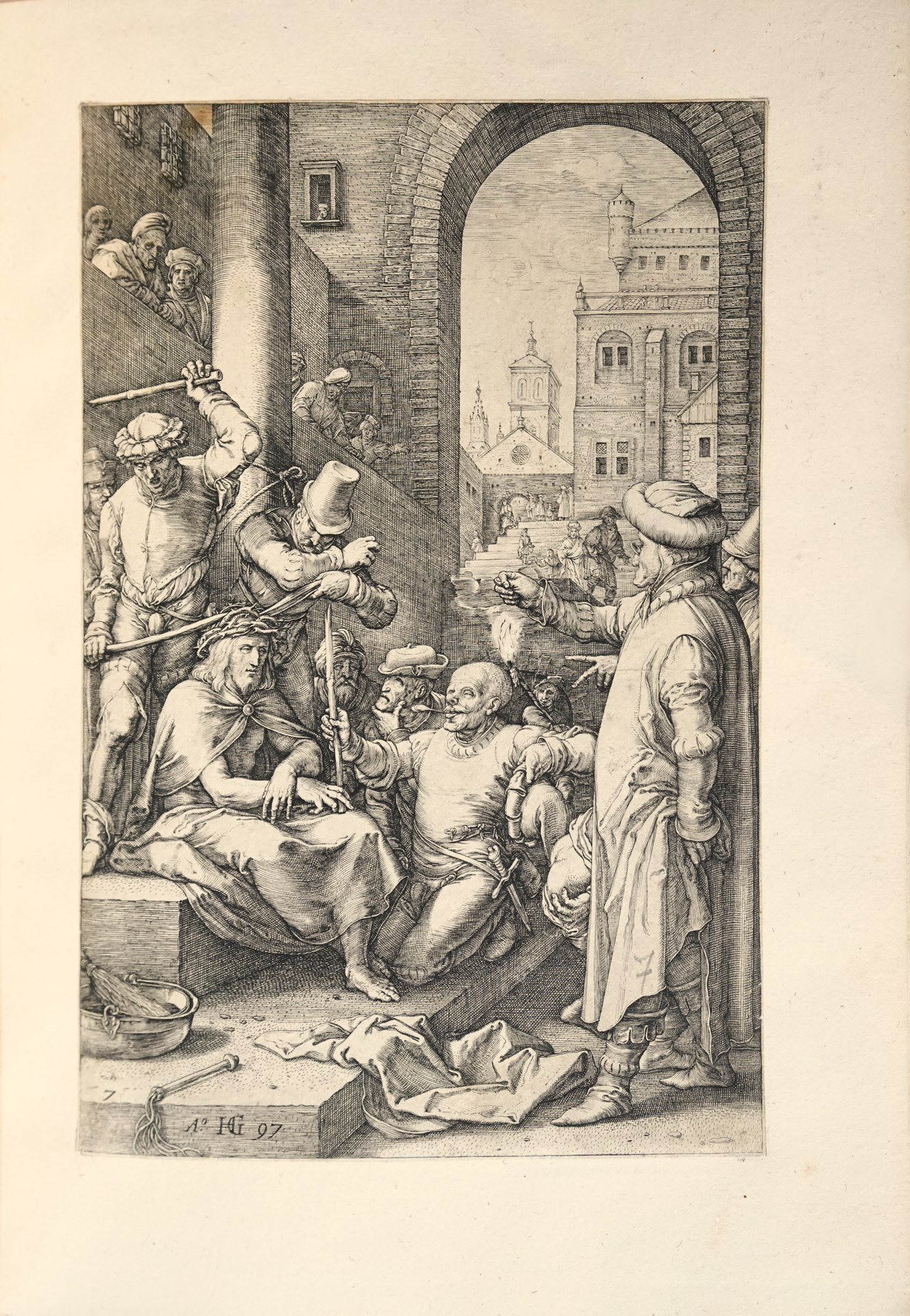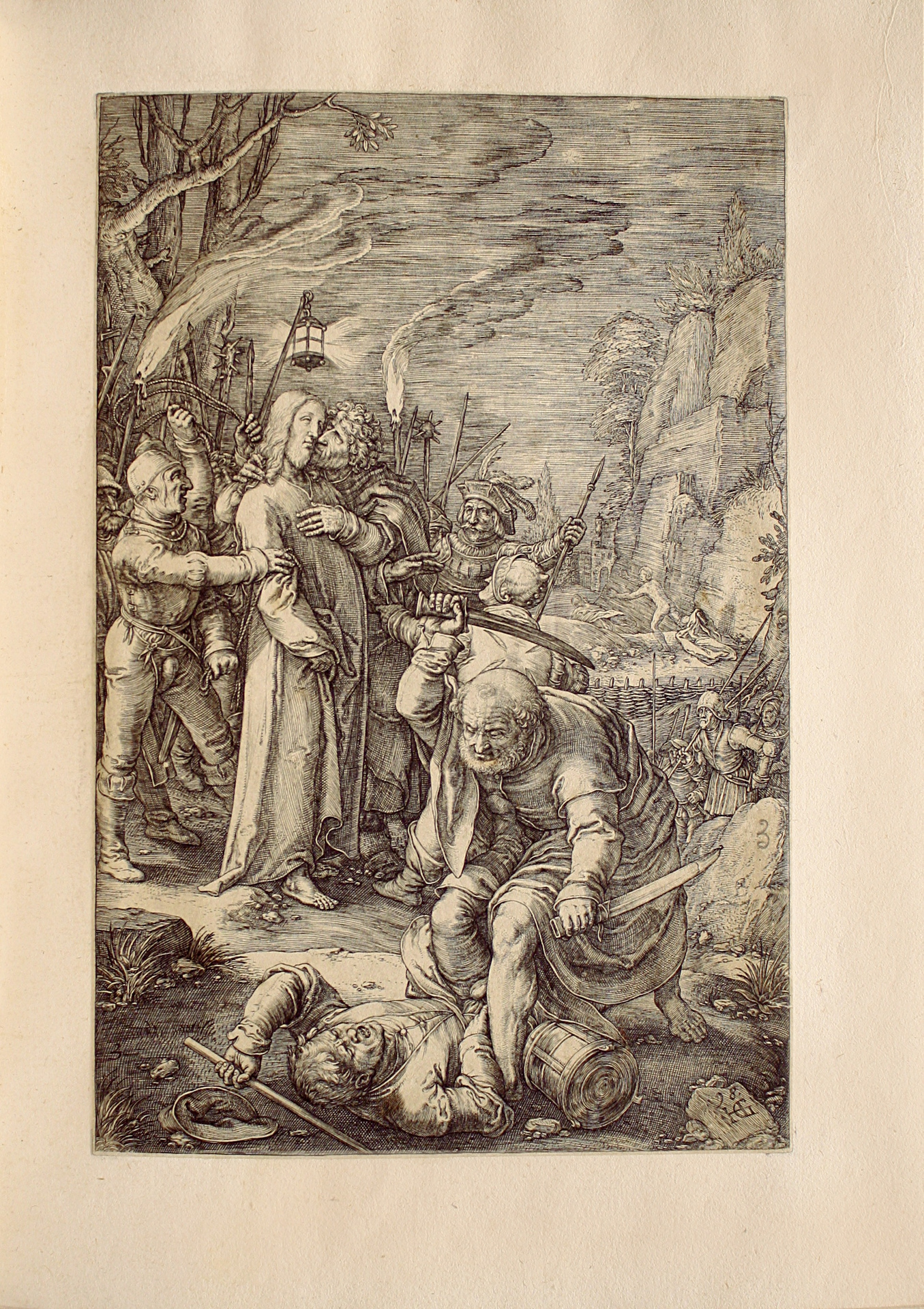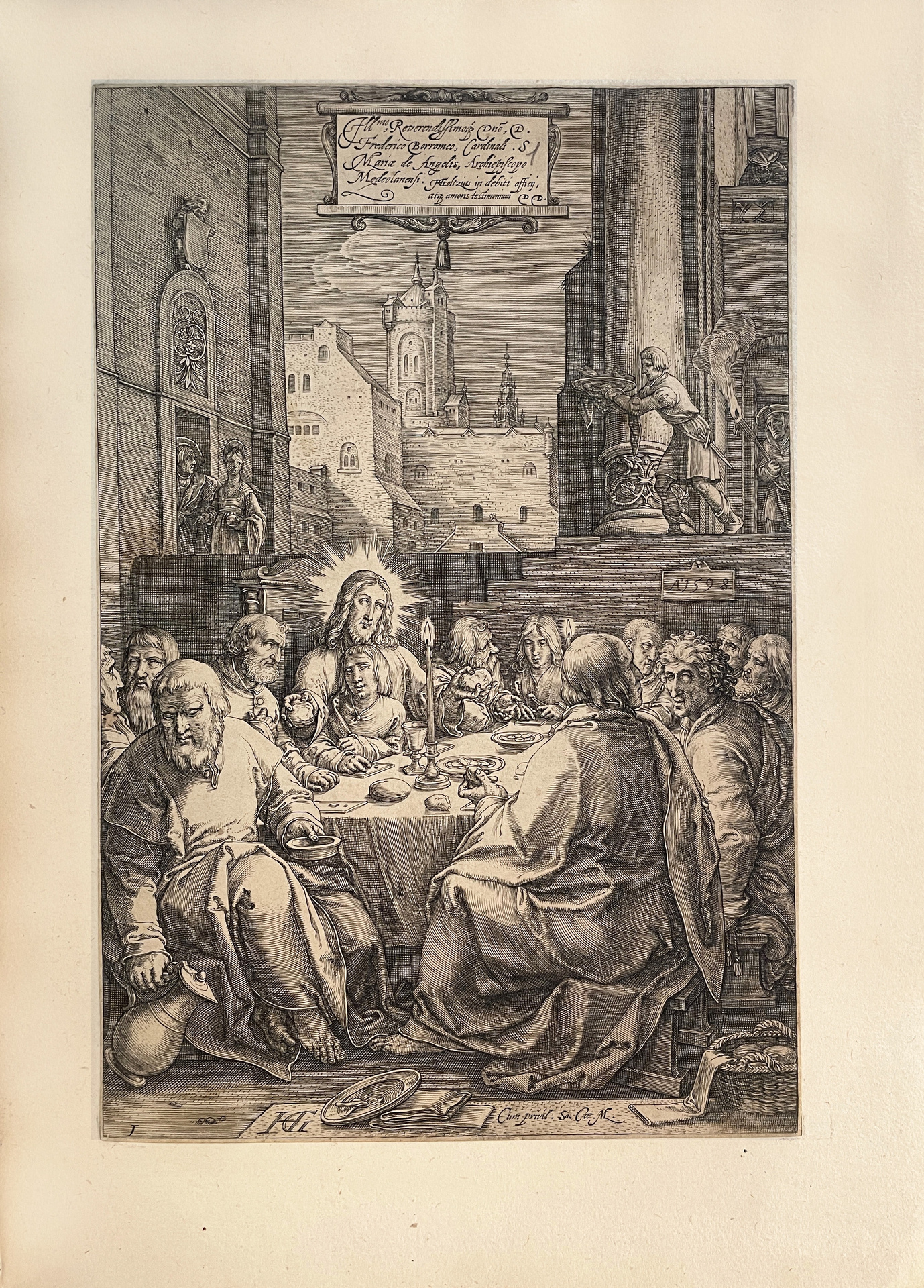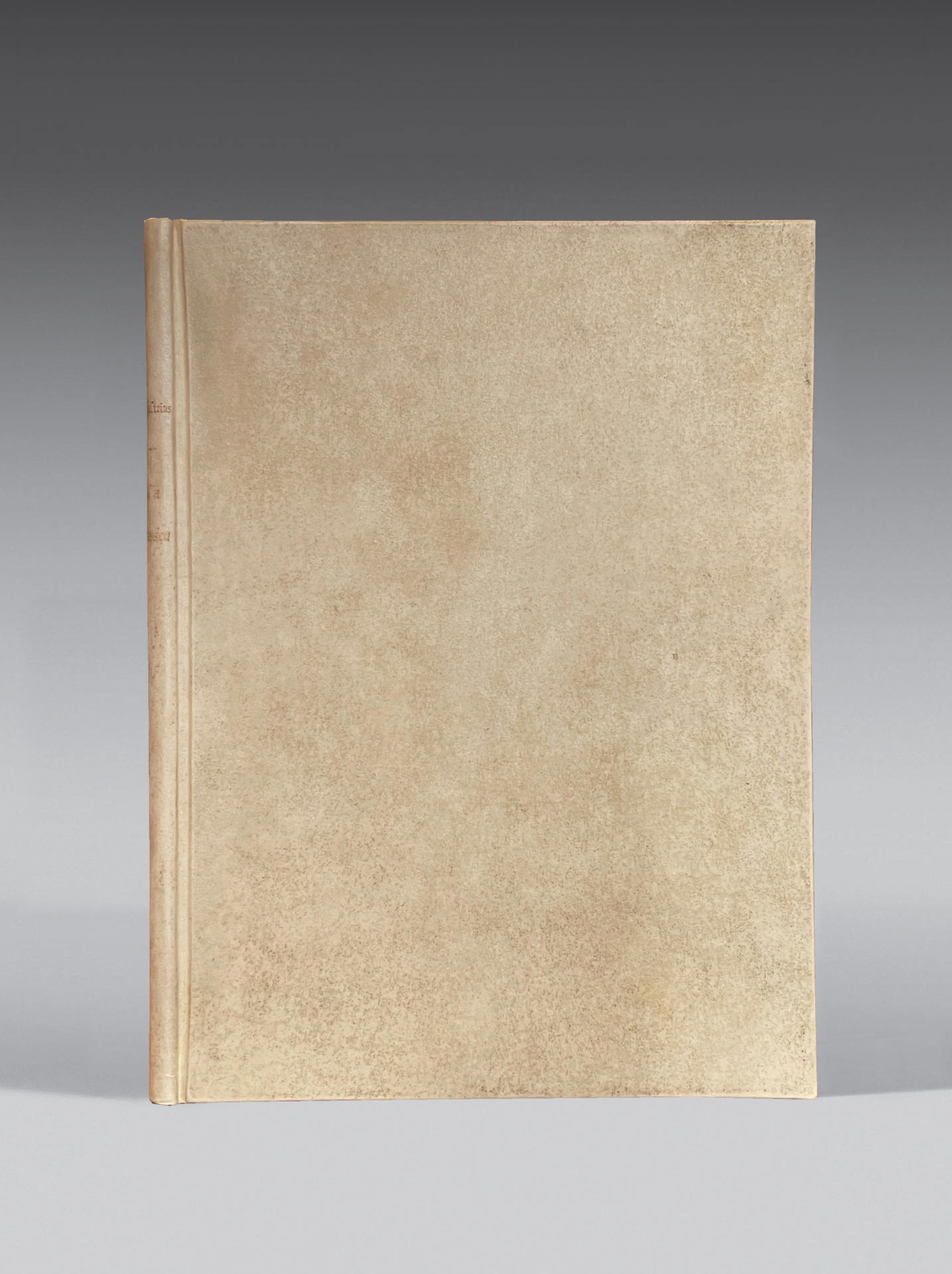N.p., 1596-1598.
Complete suite of 12 chiseled plates in 4to format. Gathered in a stiff ivory vellum binding.
Dimensions of the pages: 249 x 175 mm.
Dimensions of the engravings: 197 x 130 mm.
Splendid proofs of the authentic first issue, with all the particularities mentioned by Bartsch. (A. Bartsch, Le peintre graveur, III, 27-38).
F.W.H. Hoolstein, n°21 à 32.
Precious copy of the greatest chisel engraver in the history of engraving who composed these 12 pieces in the style of Lucas de Leyde, “which perfectly did him good”. A. Bartsch.
“In Holland, this century ends in grand style with Hendrick Goltzius (1558-1617), virtuoso of the chisel as the history of engraving never knew.”
“In his early days, Goltzius works for J. Cock, Ph. Galle, whose portrait he engraves in 1582, then for N. and C.I. Visscher, H. Hondius, J. Dankaerts, H. Adolfz and many others. At that time, he engraves beautiful original portraits in the tradition of Antwerp: Mercator in 1576, Ch. Plantin and the famous Henry IV. The Italianism also overcomes him. It is then the Portrait of H. Bol, the one of Scaliger, and he definitely adopts this style in The Holy Family which would be, by the way, an interpretation engraving after Baroccio. Eager to show his virtuosity, he engraves in 1593-1594 the Life of Virgin Mary where he neither copies nor translates, but intelligently does a pastiche of Raphael, Baroccio, Parmesan, Bassano, Durer and Lucas de Leyde by executing compositions that these masters could have conceived.
This virtuoso, this king of chisel, who goes from tour de force to tour de force left perfect examples with the Portrait of Frederik Vries in 1597 and the famous Sign-holders.
Thus ends the 16th century in Holland with the triumph of fine technique, of mannered work of which the leader H. Goltzius will still have some influence in the 17th century. On the contrary, the Catholic and prosperous Flanders, penetrated by the Spanish pomp, rejects Bruegel’s funniness and, with Rubens, will adopt a totally different style.” E. Rouir, La gravure des origines au XVIe siècle.
This suite, as remarkable by its composition than by its drawing, has been almost instantly copied and imitated several times.
A Dutch masterpiece from the end of the 16th century beautifully preserved.
